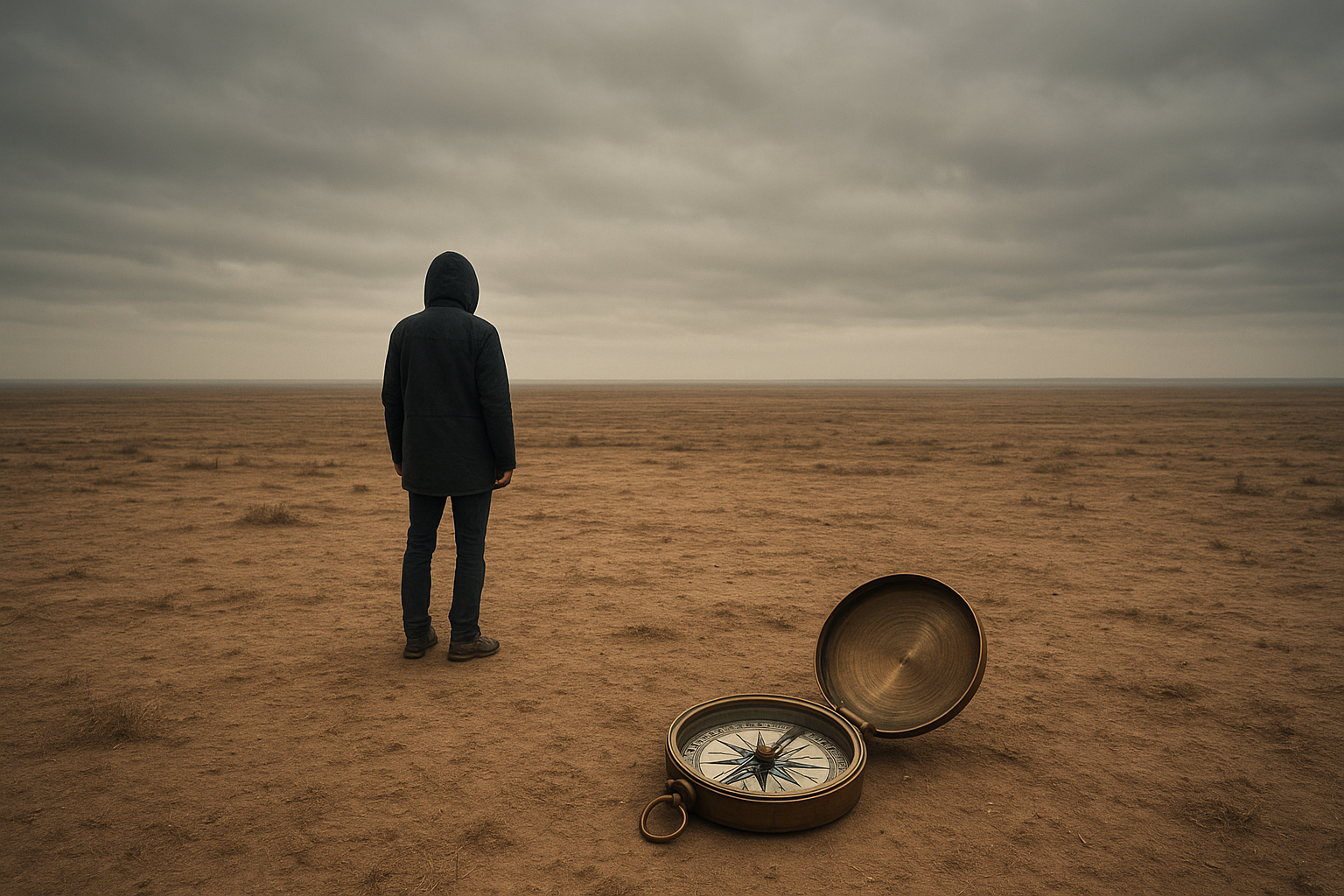Emptiness as Compass: Navigating the World Without Aim
In a world obsessed with goals, direction, and purpose, the notion of navigating life without a clear aim can seem both radical and liberating. The concept may evoke images of aimlessness or lack of ambition, but embracing emptiness as a compass offers a profound freedom that can lead to unexpected discoveries and growth.
The Weight of Purpose
Society often places immense value on having a clear purpose. From early education systems that push students towards defined career paths to the relentless pressure to achieve life’s conventional milestones, many individuals find themselves trapped in a cycle of stress and dissatisfaction. According to a report by Pew Research Center, a significant number of adults struggle to find a work-life balance, often attributing this stress to societal expectations around success and achievement.
Renowned author and philosopher Alan Watts eloquently observed, “Muddy water is best cleared by leaving it alone.” Watts suggests that clarity often emerges from surrendering to uncertainty and refraining from constant effort to force outcomes. This philosophy challenges the dominant narrative that we must always be steering towards a particular destination.
Embracing Emptiness
Embracing emptiness does not equate to surrendering to hopelessness or passivity. Rather, it encourages living with openness and receptivity. Emptiness as a compass suggests that by letting go of rigid ambitions, one can navigate life with greater adaptability and awareness.
In the words of Pema Chödrön, a prominent Buddhist teacher, “Only to the extent that we expose ourselves over and over to annihilation can that which is indestructible be found in us.” By confronting the void and stepping into spaces of uncertainty, individuals can discover inner resilience and adapt to life’s unpredictability.
The Wisdom in No-Paths
The act of going where the water flows, rather than channeling it frantically towards established routes, can open up new avenues of exploration. Without a predefined aim, the possibilities become boundless. For instance, TED Talks often feature speakers who found success not by following a specific path but by embracing curiosity and serendipity. These stories reveal the power of detours and the gains of engaging with the world without rigid expectations.
“To be lost is to be found,” affirms Joseph Campbell in his study of myth and the hero’s journey. He posits that meaning often emerges from chaos and disorder, rather than from meticulously planned routes.
This approach appears counter-intuitive in a culture that lionizes meticulous planning and self-imposed deadlines. However, it can lead to richer, more meaningful experiences as we learn to dance with the currents of life rather than resist them.
Practical Steps Toward Using Emptiness as a Compass
- Mindfulness and Meditation: Practicing mindfulness allows individuals to tune into the present moment, fostering acceptance of uncertainty. Meditation helps in settling the mind and reducing the compulsion to control every aspect of life.
- Journaling: By regularly writing down thoughts and reflections without a specific agenda, one can tap into subconscious ideas and desires that might have remained hidden.
- Experimentation: Actively trying new hobbies, subjects, or experiences without a predetermined outcome can lead to unexpected joys and insights.
- Community Engagement: Joining groups or communities that emphasize connection over competition can provide support in navigating life’s unpredictability.
The Beauty in the Journey
Perhaps the most significant outcome of using emptiness as a compass is the shift in perspective it inspires. When life is approached with flexibility, failures can transform into lessons, and setbacks can become stepping stones. As Lao Tzu said, “A good traveler has no fixed plans, and is not intent on arriving.” Embracing this mindset frees individuals to enjoy the journey, rather than fixating solely on the destination.
Ultimately, navigating the world without aim does not signify the absence of goals or dreams. Rather, it embodies a harmonious balance between ambition and acceptance. By accepting the void and allowing emptiness to guide us, we might uncover the most profound fulfillment right where we are.
The practice of using emptiness as a compass invites us to redefine success, to embrace the unknown, and to find purpose in the very act of living deliberately and mindfully each day. After all, true navigation lies in our capacity to adapt, grow, and find beauty even in uncharted waters.


